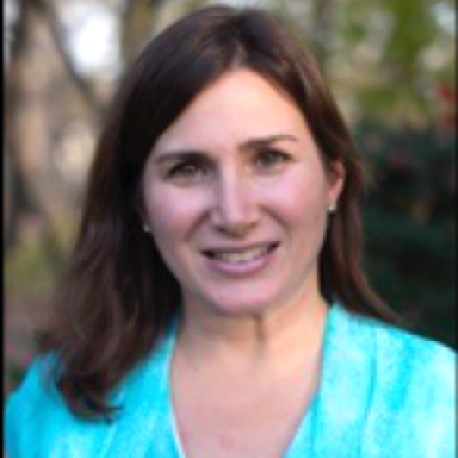Article
Getting a Treatment Is Not the End of the Road in Rare Diseases
Author(s):

We have heard the statistics many times. There are more than 7000 rare diseases and for more than 90%, there are no treatments available. Our organization supports a community affected by one of the 90%—Niemann-Pick Disease including ASMD and NPC, both rare genetic, progressive, and often-fatal lysosomal storage disorders.
There are fewer than 2000 known cases worldwide, many affecting children. Symptoms include cognitive impairment, clumsiness and difficulty walking, enlarged spleen and liver, difficulty swallowing and eating, fatigue, increased fracture risk, and early satiety. There are currently no approved treatment options in the US.
The great news for the Niemann-Pick community is that promising treatments are in the later stages of clinical development with the potential for regulatory approval in the coming year. Achieving this milestone would be a significant victory for patients and their families who face significant challenges living with Niemann-Pick. But this potential good news also highlights an important consideration in planning for the introduction of new treatments for patients who are in desperate need. How do you prepare patients and families to transition from an era of no hope to one where treatment is available?
Much of our work at the National Niemann-Pick Disease Foundation (NNPDF) in recent years has focused on meeting this challenge head on and our approach in many ways serves as a template that other rare disease communities might consider.
From our earliest days, NNPDF has provided support services to patients living with Nieman-Pick Disease and their families. These efforts have focused on building broader awareness of the disease and helping to identify and expand the services and resources that families need.
We have also taken steps to keep families updated about the range of clinical research programs that have been initiated in recent years to try to develop new treatments. Our recent annual conference included a full schedule of presentations and updates on these clinical research programs, and we had more participants in our virtual meeting this year than ever before.
As we continue our focus on disease awareness and patient support, we have also in recent years had to expand our efforts to include both information and education to prepare the Niemann-Pick community to transition to an era when treatment might be available. In addition to helping families learn about and understand the process for developing and approving drugs in the US, we are also now providing resources to help them better understand and manage issues related to their healthcare coverage, reimbursement, patient access and industry-sponsored financial assistance programs.
We are helping them understand that there will be indications and eligibility criteria for different treatments and that NNPDF is working to ensure that access to treatment through healthcare coverage is available to as many patients as possible. We are also developing new resources that outline the important questions and topics that patients and families should discuss with their medical provider to empower them to take a more active role in often complex treatment decisions.
While availability of treatment is good news, many of the issues associated with patient access can cause stress and confusion. An important goal in developing programs related to the introduction of an approved treatment is to help reduce anxiety and outline a clear path forward in accessing care. For many rare disease communities, another daunting but welcome challenge for many families may be the need to reconsider many longstanding plans for the future once approved treatment is available.
In many cases, an approved treatment will mean major changes in how patients think about their own health, plan for their care, and engage with their medical teams. Treatment may present new challenges that require careful planning and monitoring. Patients and caregivers might need to reassess plans related to education, careers, job training, and living independently. Once again, our goal must be to provide the insights and support services that can help reduce any challenges associated with making important life decisions at every stage.
The final focus in supporting patients is often related to helping them manage expectations. In many cases, treatments for rare diseases will have some limitations in areas including efficacy, safety and cost. Advocacy leaders can play a role in helping their communities work with their healthcare teams to assess, understand, and address all the factors related to treatment so that patients and caregivers can make informed decisions.
In some cases, patients and caregivers may need very targeted services to support their psychological and emotional health. Peer-to-peer connections can be especially effective in helping patients handle the emotional impact of the transition to treatment.
Of course, none of these challenges should dampen the new hope that a first approved treatment can bring to a rare disease community. A first treatment is both a milestone and a sign that research is advancing and could lead to more personalized treatment options or combination therapies in the years ahead.
By recognizing the needs of patients and families whenever a new treatment becomes available, advocacy organizations can continue to lead in bringing them the targeted information and support they need to access care and thrive. The key is recognizing that an approved treatment and a new standard of care is not the end of the road in patient advocacy. It is a new direction and the beginning of a new era of hope that requires careful planning, new resources and very customized support.
Joslyn Crowe, MSW, MA, is executive director of the National Niemann-Pick Disease Foundation, Inc., a non-profit, unbiased patient advocacy and family support organization dedicated to supporting and empowering patients and families affected by Niemann-Pick disease, through education, collaboration and research.
The views expressed in this piece are those of the author, not necessarily those of the publication.
Healthcare experts and clinicians interested in contributing to HCPLive may contact the editorial staff here.




